- Department of Pure and Applied Physics, Guru Ghasidas Vishwavidyalaya (A Central University), Bilaspur, Chhattisgarh, India
The research in the area of terahertz (THz) radiation is a subject of intense discussion in the international scientific community owing to its various applications in the fields of defense systems, security, interstellar studies, imaging, and agriculture. Although most of these applications have captured the attention of researchers in recent years, the development of a THz radiation source that meets specific requirements remains a challenging task. In this regard, the emission frequencies of terahertz quantum-cascade lasers (THz QCLs) can be fine-tuned by adjusting the thickness of the quantum well and the height of the barriers. The electron distribution among three periods of a hybrid active region design QCL structure is numerically simulated to estimate the optical gain spectra and electric field strength values. The results of the numerical simulations are compared with those of the experimental investigations by fabricating a
1 Introduction
Terahertz quantum-cascade lasers (THz QCLs) are semiconductor lasers which can produce lasing action by using the intersub-band transitions within the heterostructure of quantum wells and barriers [(Williams, 2007; Vitiello et al., 2012; Sharma et al., 2021; Xu et al., 2007; Lee et al., 2010; Amanti et al., 2009; Benz et al., 2009; Qin et al., 2009; Mahler et al., 2010; Barbieri et al., 2004; Williams et al., 2006; Wienold et al., 2010; Jirauschek, 2010; Schrottke et al., 2010)]. The main emphasis of the researchers was to put forward significant efforts to obtain low threshold current density values, high temperature operation, stable emission frequencies, and high optical output powers of THz QCLs. Many researchers have devoted efforts to increase the efficiency of THz sources [(Terazzi and Faist, 2010; Strupiechonski et al., 2011; Sirtori et al., 1998; Gmachl et al., 2001; Lu et al., 2006; Sharma et al., 2011; Han et al., 2018; Kainz et al., 2018; Albo et al., 2019; Chassagneux et al., 2007; Röben et al., 2021; Hempel et al., 2016; Röben et al., 2019; Li et al., 2014)]. Fathololoumi et al. investigated the THz QCL structures and obtained an operating temperature of 200 K in the pulsed-wave mode operation (Fathololoumi et al., 2012). After this, the scientific community had accelerated the research efforts to obtain higher operating temperatures in the pulsed- and the continuous-wave (CW) mode operation of THz QCLs; however, the researchers were not able to achieve any significant increase in the operating temperature for many years. It was reported that two-quantum well active region design and selection of a special Cu–Cu waveguide can elevate the operating temperature to 210.5 K in the pulsed-wave mode (Bosco et al., 2019). The non-equilibrium Green’s function model was applied to optimize the THz QCL structure.
The maximum operating temperature in the pulsed-mode operation of THz QCLs was recently demonstrated to be 250 K at 4 THz by use of a clean n-level system of the active region, where n is the number of upper sub-bands responsible for the lasing action (Khalatpour et al., 2021). The threshold and maximum current density values are found to be 1.54 and 2.60 kA
The optical output power of the THz QCL devices can be improved in the pulsed and the CW operation mode by varying the active region thickness, which was explored to some extent in the recent reports of the literature (Brandstetter et al., 2013; Li et al., 2017; Salih et al., 2013). The variation in the active region thickness was investigated for three-well, resonant-phonon depopulation THz QCLs with semi-insulating surface-plasmon waveguide (Salih et al., 2013). The operating parameters of THz QCLs with active-region thicknesses of 10, 7.5, 6, and 5
In another report,
In the present article, the threshold optical gain and the optical confinement factor are calculated as a function of the active region thickness, which is followed by numerical simulations to deduce the energy sub-band structure diagram of the GaAs/AlGaAs heterostructure. The optical gain spectra and electric field strength of THz QCLs with the interlaced active regions are estimated by using the self-consistent numerical solutions of the Schrödinger and Poisson equations. As far as the experimental investigations are concerned, we fabricate a
2 Simulations of transport and lasing characteristics
The threshold optical gain
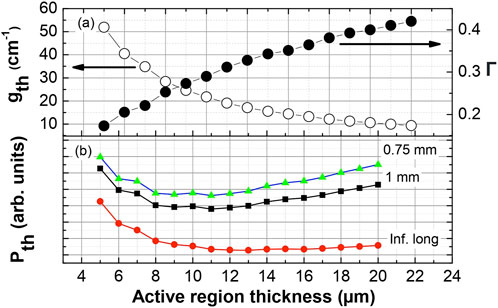
Figure 1. (a) Calculated threshold optical gain
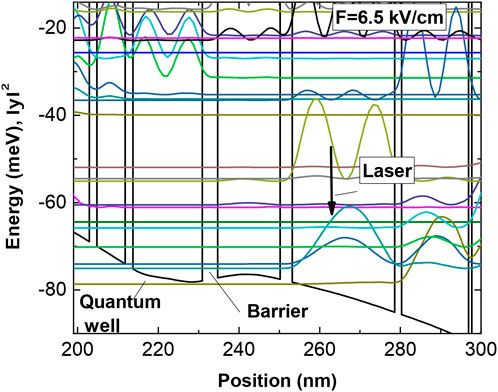
Figure 2. Energy sub-band structure diagram of the interlaced active region THz QCL. The sequence of various layers is
Figure 3 shows images of the THz QCL stripe processed at a distance of 11.6 mm from the center of the wafer with a ridge width of
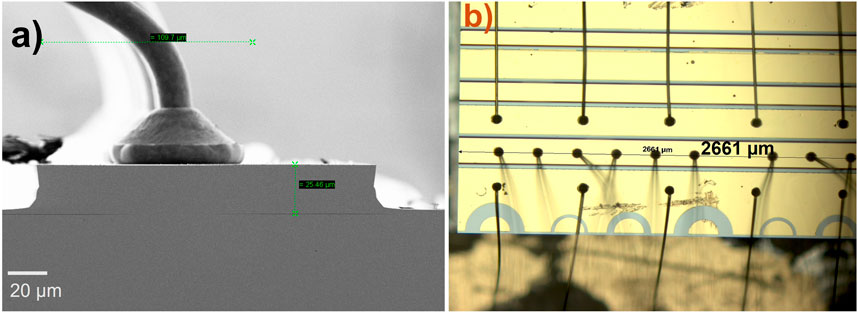
Figure 3. Images of the THz QCL stripe processed at a distance of 11.6 mm from the center of wafer with a ridge width of
The outcome of the numerical computation is depicted in Figure 4 where the variations in the electric field strength as a function of the frequency and current density are highlighted. It is to be noted that the maximum value in the optical gain occurs from 4.06 to 5.02 THz, which is illustrated by the vertical dashed lines in Figure 4a. Nevertheless, the onset of the negative differential conductivity (NDC) in Figure 4b is marked by the horizontal dashed line at 6.7 kV/cm and the current density of 517 A
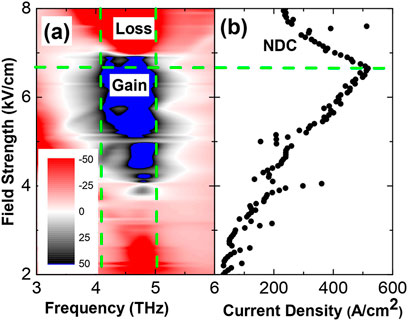
Figure 4. Calculated (a) optical gain spectra and field strength values of the THz QCL structure with the interlaced active region design. The vertical dashed lines indicate the optical gain region from 4.06 to 5.02 THz. (b) The electric field strength profile where the horizontal dashed line indicates triggering of negative differential conductivity (NDC) of the THz QCL structure.
3 Experimental configurations
The standard

Table 1. Details of the different portions of THz QCLs from the parent wafer. Here
4 Experimental results and discussion
A THz QCL stripe of dimensions
In order to understand the growth homogeneity of the fabricated wafers, we have thoroughly investigated portion B of the parent wafer by processing approximately 5 THz QCL stripes from the center to the edge of the wafer. The experimental light–current density–voltage curves of the
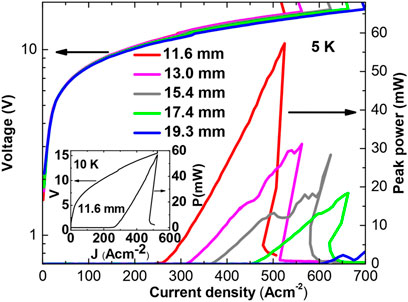
Figure 5. Experimental results of light–current–voltage (LIV) curves of the
All of the QCL stripes are
The elevated threshold current density values can be understood on the basis of increasing interface roughness from the average distance from the center to the edge of the wafer, which can significantly affect the lasing of the THz QCLs (Kumar et al., 2007; Jenichen et al., 1997). The temperature gradient, growth rate modulation, and rotation of the wafers during the growth procedure are possible reasons for increased interface roughness toward the edge of the wafer. Surface roughness of the wafer is not so critical; however, interface roughness can significantly influence the emission frequencies of THz QCLs. This effect can be attributed to composition grading at the interfaces between the quantum wells and barriers in the wafer (Sharma et al., 2013). A strong decrease in the optical output power of the THz QCLs processed away from the central slot to the edge of the wafer can be explained by a significant inhomogeneity in the growth direction. The performance of
As found in the inset of Figure 5, the electrical power dissipated for the THz QCL stripe processed at the distance of 11.6 mm from the center to the edge of the wafer at 10 K is found to be approximately 56 W at the current density value of 0.53
The emission spectra of standard
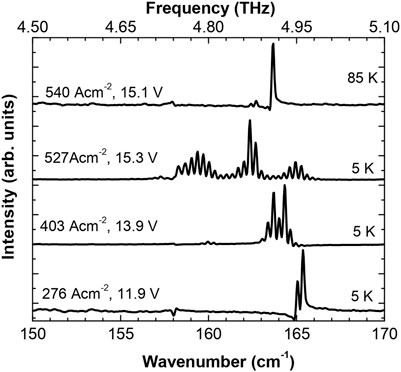
Figure 6. The emission spectra measurements in the pulsed-mode operation for the
The spectral mode emission shown in Figure 6 originates from the Fabry–Perot laser cavity modes. The emission spectra cannot be interpreted as a transition from single-mode to multimode emission due to the limited dynamic range of the current density at elevated temperatures. The spectral broadening is governed by lifetime broadening between the two energy states responsible for lasing, along with an additional broadening factor attributed to the interface roughness. The inhomogeneous broadening of the gain spectrum is influenced by this interface roughness, which can be partially controlled through optimized growth conditions. The internal slope efficiency is affected by the inhomogeneous line broadening of the gain spectrum, which typically determines the threshold and operational current density values (Schrottke et al., 2010). Longitudinal mode shifting is primarily governed by the optical gain medium and resonant cavity. These THz QCLs are specifically designed for heterodyne detection and interstellar applications targeting a specific emission frequency of 4.745 THz, where only the central emission frequencies are of significance. For portion B of the parent wafer, the dual mode emission of approximately 4.94 THz is obtained at 5 K at the current density of 276 A
The threshold current density values from the center of wafer are shown in Figure 7A. The maximum and minimum values of the threshold current density are 608 A
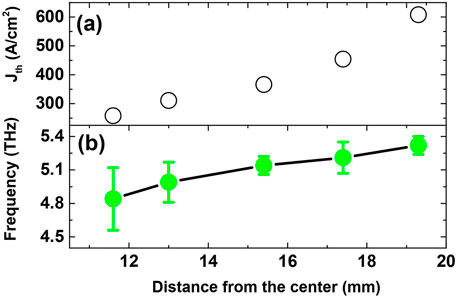
Figure 7. (a) The threshold current density and (b) emission frequency values versus distance from the central slot of wafer for
Portion C of the parent wafer is processed in such a way that only 12
Next, we investigate the LIV and the emission frequency spectra of the THz QCL stripe from portion E of the wafer, which is 200
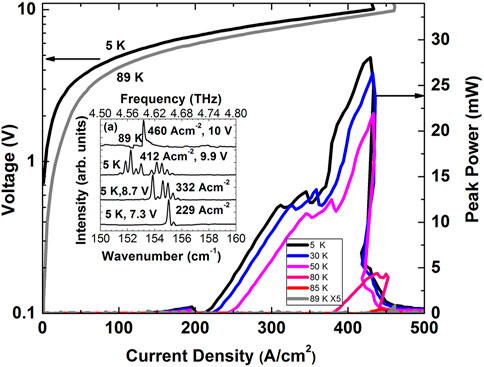
Figure 8. The LIV characteristics of
In the next step, we have investigated a 12
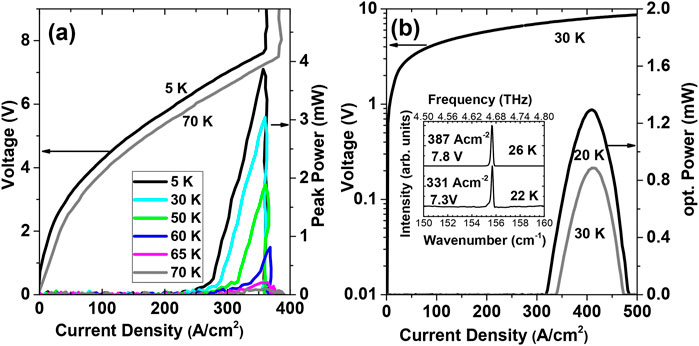
Figure 9. (a) The measured LIV curves of the 12
At 20 K, the optical output power and threshold current density are 1.3 mW and 318 A
It is quite obvious from Figure 9b that it is difficult to obtain higher operating temperatures when the device is driven in the CW operation mode because of the thermal effects. It is also reported in the literature that the thicker active region QCL (
The measured electric field strength versus the current density of the THz QCL structures for different portions (A, B, C, D, E, and F) of the parent wafer is illustrated in Figure 10. The circles 1 and 2 represent the onset of the NDC for
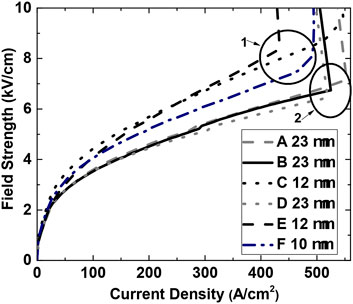
Figure 10. The measured electric field strength versus the current density of the THz QCL structures for different portions (A, B, C, D, E, and F) of the parent wafer. The circles 1 and 2 indicate
In the case of the THz QCL stripe processed from portions A and B of the parent wafer, the onset of the NDC occurs at the electric field strength values of 7.2 and 6.7 kV/cm at the maximum current density values of 553 and 524
In the case of the THz QCL stripe processed from portions C and E of the parent wafer, the onset of the NDC occurs at the electric field strength values of 9.4 and 8.4 kV/cm at the maximum current density values of 542 and 433
5 Summary
In summary, we have performed calculations of the threshold optical gain and the optical confinement factor as a function of the active region thickness, which is followed by the numerical simulations to deduce the energy subband structure diagram, the optical gain spectra, and field strength as function of the current density of the THz QCL structure with the interlaced active region design. We have fabricated the
Data availability statement
The raw data supporting the conclusions of this article will be made available by the authors, without undue reservation.
Author contributions
RS: data curation, investigation, methodology, software, writing – original draft, writing – review and editing.
Funding
The author(s) declare that no financial support was received for the research and/or publication of this article.
Acknowledgments
The laboratory facilities, critical reading, and constructive criticism of the manuscript by H.T. Grahn, L. Schrottke, and M. Wienold, Paul-Drude-Institut für Festkörperelektronik, Berlin, Germany, are sincerely acknowledged by the corresponding author Rajesh Sharma. The help of K Biermann and M. Höricke for sample growth and W. Anders for sample processing is sincerely acknowledged.
Conflict of interest
The author declares that the research was conducted in the absence of any commercial or financial relationships that could be construed as a potential conflict of interest.
Publisher’s note
All claims expressed in this article are solely those of the authors and do not necessarily represent those of their affiliated organizations, or those of the publisher, the editors and the reviewers. Any product that may be evaluated in this article, or claim that may be made by its manufacturer, is not guaranteed or endorsed by the publisher.
References
Albo, A., Flores, Y. V., Hu, Q., and Reno, J. L. (2019). Split-well direct-phonon terahertz quantum cascade lasers. Appl. Phys. Lett. 114, 1911021–1911025. doi:10.1063/1.5089854
Amanti, M. I., Fischer, M., Scalari, G., Beck, M., and Faist, J. (2009). Low-divergence single-mode terahertz quantum cascade laser. Nat. Photonics 3, 586–590. doi:10.1038/nphoton.2009.168
Barbieri, S., Alton, J., Beere, H. E., Fowler, J., Linfield, E. H., and Ritchie, D. A. (2004). 2.9 THz quantum cascade lasers operating up to 70K in continuous wave. Appl. Phys. Lett. 85, 1674–1676. doi:10.1063/1.1784874
Benz, A., Deutsch, Ch, Fasching, G., Unterrainer, K., Andrews, A. M., Klang, P., et al. (2009). Active photonic crystal terahertz laser. Opt. Express 17, 941–946. doi:10.1364/oe.17.000941
Bosco, L., Franckie, M., Scalari, G., Beck, M., Wacker, A., and Faist, J. (2019). Thermoelectrically cooled THz quantum cascade laser operating up to 210 K. Appl. Phys. Lett. 115. 0106011-0106015. doi:10.1063/1.5110305
Brandstetter, M., Deutsch, C., Krall, M., Detz, H., MacFarland, D. C., Zederbauer, T., et al. (2013). High power terahertz quantum cascade lasers with symmetric wafer bonded active regions. Appl. Phys. Lett. 103, 1711131–1711135. doi:10.1063/1.4826943
Chassagneux, Y., Palomo, J., Colombelli, R., Barbieri, S., Dhillon, S., Sirtori, C., et al. (2007). Low threshold THz QC lasers with thin core regions. Electron. Lett. 43, 285–286. doi:10.1049/el:20073842
Chen, Z., Liu, A., Chang, D., Dhillon, S., Razeghi, M., and Wang, F. (2024). Combined resonant tunneling and rate equation modeling of terahertz quantum cascade lasers. J. Appl. Phys. 135 (11), 115703. doi:10.1063/5.0198059
Curwen, C. A., Addamane, S. J., Reno, J. L., Shahili, M., Kawamura, J. H., Briggs, R. M., et al. (2021). Thin THz QCL active regions for improved continuous-wave operating temperature. AIP Adv. 11, 125018. doi:10.1063/5.0071953
Fathololoumi, S., Dupont, E., Chan, W. I., Wasilewski, Z. R., Laframboise, S. R., Ban, D., et al. (2012). Terahertz quantum cascade lasers operating up to 200 K with optimized oscillator strength and improved injection tunneling. Opt. Express 20, 3866–3876. doi:10.1364/oe.20.003866
Gao, L., Feng, C., and Zhao, X. (2023). Recent developments in terahertz quantum cascade lasers for practical applications. Nanotechnol. Rev. 12 (1), 20230115. doi:10.1515/ntrev-2023-0115
Gmachl, C., Capasso, F., Sivco, D. L., and Cho, A. Y. (2001). Recent progress in quantum cascade lasers and applications. Rep. Prog. Phys. 64, 1533–1601. doi:10.1088/0034-4885/64/11/204
Han, Y. J., Li, L. H., Zhu, J., Valavanis, A., Freeman, J. R., Chen, L., et al. (2018). Silver-based surface plasmon waveguide for terahertz quantum cascade lasers. Opt. Express 26, 3814–3827. doi:10.1364/oe.26.003814
Hempel, M., Röben, B., Schrottke, L., Hübers, H. W., Grahn, H. T., and Grahn, H. T. (2016). Fast continuous tuning of terahertz quantum-cascade lasers by rear-facet illumination. Appl. Phys. Lett. 108, 1911061–1911065. doi:10.1063/1.4949528
Jenichen, B., Hey, R., Wassermeier, M., and Ploog, K. (1997). Investigation of the interface roughness of GaAs single quantum wells by X-ray diffractometry, reflectivity and diffuse scattering. Il Nuovo Cimento D. 19, 429–438. doi:10.1007/bf03041002
Jirauschek, C. (2010). Monte Carlo study of carrier-light coupling in terahertz quantum cascade lasers. Appl. Phys. Lett. 96, 011103-1-011103–3. doi:10.1063/1.3284523
Kainz, M. A., Schönhuber, S., Andrews, A. M., Detz, H., Limbacher, B., Strasser, G., et al. (2018). Barrier height tuning of terahertz quantum cascade lasers for high-temperature operation. ACS Photonics 5, 4687–4693. doi:10.1021/acsphotonics.8b01280
Kaur, H., Sharma, R., Laurent, T., Torres, J., Nouvel, P., Palermo, C., et al. (2022). Transport characteristics of AlGaN/GaN structures for amplification of terahertz radiations. Appl. Phys. A 128, 144. doi:10.1007/s00339-022-05284-8
Khalatpour, A., Paulsen, A. K., Deimert, C., Wasilewski, Z. R., and Hu, Q. (2021). High power portable terahertz laser systems. Nat. Photonics 15, 16–20. doi:10.1038/s41566-020-00707-5
Khalatpour, A., Tam, M. C., Addamane, S. J., Reno, J., Wasilewski, Z., and Hu, Q. (2023). Enhanced operating temperature in terahertz quantum cascade lasers based on direct phonon depopulation. Appl. Phys. Lett. 122, 161101. doi:10.1063/5.0144705
Kohen, S., Williams, B. S., and Hu, Q. (2005). Electromagnetic modeling of terahertz quantum cascade laser waveguides and resonators. J. Appl. Phys. 97, 053106. doi:10.1063/1.1855394
Kruger, O., Kreutzmann, S., Prasai, D., Wienold, M., Sharma, R., Pittroff, W., et al. (2013). Epitaxial-side mounting of terahertz quantum-cascade lasers for improved heat management. IEEE Photonics Technol. Lett. 25, 1570–1573. doi:10.1109/lpt.2013.2271323
Kumar, S., Williams, B. S., Qin, Q., Lee, A. W. M., Hu, Q., and Reno, J. L. (2007). Surface-emitting distributed feedback terahertz quantum-cascade lasers in metal-metal waveguides. Opt. Express 15, 113–128. doi:10.1364/oe.15.000113
Lee, A. W. M., Williams, B. S., Kumar, S., Hu, Q., and Reno, J. L. (2010). Tunable terahertz quantum cascade lasers with external gratings. Opt. Lett. 35, 910–912. doi:10.1364/ol.35.000910
Levy, S., Gower, N. L., Piperno, S., Addamane, S. J., Reno, J. L., and Albo, A. (2024). Analyzing the effect of doping concentration in split-well resonant-phonon terahertz quantum cascade lasers. Opt. Express 32, 12040–12053. doi:10.1364/oe.515419
Li, L., Chen, L., Zhu, J., Freeman, J., Dean, P., Valavanis, A., et al. (2014). Terahertz quantum cascade lasers with 1 W output powers. Electron. Lett. 50, 309–311. doi:10.1049/el.2013.4035
Li, L. H., Chen, L., Freeman, J. R., Salih, M., Dean, P., Davies, A. G., et al. (2017). Multi-Watt high-power THz frequency quantum cascade lasers. Electron. Lett. 53, 799–800. doi:10.1049/el.2017.0662
Li, W., Li, Y., Ma, Y., Xu, Y., Liu, J., Zhuo, N., et al. (2022). Continuous-wave terahertz quantum cascade laser based on a hybrid bound to bound quantum design. Front. Photonics 3, 1071879. doi:10.3389/fphot.2022.1071879
Lu, S. L., Schrottke, L., Teitsworth, S. W., Hey, R., and Grahn, H. T. (2006). Formation of electric field domains in GaAs/AlGaAs quantum cascade laser structures. Phys. Rev. B 73, 0333111–0333114. doi:10.1103/PhysRevB.73.033311
Lü, X., Röben, B., Schrottke, L., Biermann, K., and Grahn, H. T. (2021). Correlation between frequency and location on the wafer for terahertz quantum-cascade lasers. Semicond. Sci. Technol. 36, 035012. 0350121-0350126. doi:10.1088/1361-6641/abdd4b
Mahler, L., Tredicucci, A., Beltram, F., Beere, H. E., and Ritchie, D. A. (2010). Tuning a distributed feedback laser with a coupled microcavity. Opt. Express 18, 19185–19191. doi:10.1364/oe.18.019185
Qin, Q., Williams, B. S., Kumar, S., Reno, J. L., and Hu, Q. (2009). Tuning a terahertz wire laser. Nat. Photonics 3, 732–737. doi:10.1038/nphoton.2009.218
Röben, B., Lü, X., Biermann, K., Schrottke, L., and Grahn, H. T. (2019). Terahertz quantum-cascade lasers for high-resolution spectroscopy of sharp absorption lines. J. Appl. Phys. 125, 1516131–1516137. doi:10.1063/1.5079701
Röben, B., Lü, X., Schrottke, L., Biermann, K., and Grahn, H. T. (2021). Effective group dispersion of terahertz quantum-cascade lasers. J. Phys. D. Appl. Phys. 54, 0251101–0251110. doi:10.1088/1361-6463/abbde3
Salih, M., Dean, P., Valavanis, A., Khanna, S. P., Li, L. H., Cunningham, J. E., et al. (2013). Terahertz quantum cascade lasers with thin resonant-phonon depopulation active regions and surface-plasmon waveguides. J. Appl. Phys. 113, 1131101–1131105. doi:10.1063/1.4795606
Schrottke, L., Wienold, M., Giehler, M., Hey, R., and Grahn, H. T. (2010). Analysis of the slope efficiency for terahertz quantum-cascade lasers. J. Appl. Phys. 108, 1031081–1031086. doi:10.1063/1.3511470
Sharma, R., Kaur, H., and Singh, M. (2021). Recent advances of efficient design of terahertz quantum-cascade lasers. Plasmonics 16, 449–461. doi:10.1007/s11468-020-01295-4
Sharma, R., Schrottke, L., Wienold, M., Biermann, K., Hey, R., and Grahn, H. T. (2011). Effect of stimulated emission on the transport characteristics of terahertz quantum-cascade lasers. Appl. Phys. Lett. 99, 1511161–1511163. doi:10.1063/1.3653262
Sharma, R., Schrottke, L., Wienold, M., Tahraoui, A., Biermann, K., and Grahn, H. T. (2013). Influence of post-growth rapid thermal annealing on the transport and lasing characteristics of terahertz quantum-cascade laser. J. Phys. D. Appl. Phys. 46, 3051071–3051075. doi:10.1088/0022-3727/46/30/305107
Sirtori, C., Capasso, F., Faist, J., Hutchinson, A. L., Sivco, D. L., and Cho, A. Y. (1998). Resonant tunneling in quantum cascade lasers. IEEE J. Quantum Electron 34, 1722–1729. doi:10.1109/3.709589
Strupiechonski, E., Grassani, D., Fowler, D., Julien, F. H., Khanna, S. P., Li, L., et al. (2011). Vertical subwavelength mode confinement in terahertz and mid-infrared quantum cascade lasers. Appl. Phys. Lett. 98, 101102–101103. doi:10.1063/1.3560980
Terazzi, R., and Faist, J. (2010). A density matrix model of transport and radiation in quantum cascade lasers. New J. Phys. 12, 033045. 0330451-03304510. doi:10.1088/1367-2630/12/3/033045
Vitiello, M. S., Consolino, L., Bartalini, S., Taschin, A., Tredicucci, A., Inguscio, M., et al. (2012). Quantum-limited frequency fluctuations in a terahertz laser. Nat. Photonics 6, 525–528. doi:10.1038/nphoton.2012.145
Wienold, M., Röben, B., Schrottke, L., Sharma, R., Tahraoui, A., Biermann, K., et al. (2014). High-temperature, continuous-wave operation of terahertz quantum-cascade lasers with metal-metal waveguides and third-order distributed feedback. Opt. Express 22, 3334–3348. doi:10.1364/oe.22.003334
Wienold, M., Schrottke, L., Giehler, M., Hey, R., Anders, W., and Grahn, H. T. (2010). Low-threshold terahertz quantum-cascade lasers based on GaAs/Al0.25Ga0.75As heterostructures. Appl. Phys. Lett. 97. 0711131-0711133. doi:10.1063/1.3480406
Wienold, M., Schrottke, L., Giehler, M., Hey, R., and Grahn, H. T. (2011). Nonlinear transport in quantum-cascade lasers: the role of electric-field domain formation for the laser characteristics. J. Appl. Phys. 109, 0731121–0731126. doi:10.1063/1.3573504
Wienold, M., Tahraoui, A., Schrottke, L., Sharma, R., Lü, X., Biermann, K., et al. (2012). Lateral distributed-feedback gratings for single-mode, high-power terahertz quantum-cascade lasers. Opt. Express 20, 11207–11217. doi:10.1364/oe.20.011207
Williams, B. S. (2007). Terahertz quantum-cascade lasers. Nat. Photonics 1, 517–525. doi:10.1038/nphoton.2007.166
Williams, B. S., Kumar, S., Hu, Q., and Reno, J. L. (2006). High-power terahertz quantum-cascade lasers. Electron Lett. 42, 89–91. doi:10.1049/el:20063921
Keywords: thick active region, transport and lasing characteristics, terahertz quantum-cascade lasers, quantum wells and barriers, optical gain
Citation: Sharma R (2025) Study of thick active region in a terahertz quantum-cascade laser. Adv. Opt. Technol. 14:1431573. doi: 10.3389/aot.2025.1431573
Received: 12 May 2024; Accepted: 25 June 2025;
Published: 22 July 2025.
Edited by:
Yahya Moubarak Meziani, University of Salamanca, SpainReviewed by:
Huseyin Canbolat, Ankara Yıldırım Beyazıt University, TürkiyeReena Sharma, Indian Institute of Technology Ropar, India
Abhijit Kundu, Techno India Group, India
Deepak Kumar, University of Leeds, United Kingdom
Copyright © 2025 Sharma. This is an open-access article distributed under the terms of the Creative Commons Attribution License (CC BY). The use, distribution or reproduction in other forums is permitted, provided the original author(s) and the copyright owner(s) are credited and that the original publication in this journal is cited, in accordance with accepted academic practice. No use, distribution or reproduction is permitted which does not comply with these terms.
*Correspondence: Rajesh Sharma, c2hhcm1hX3JhamVzaDEyMzRAeWFob28uY29t
 Rajesh Sharma
Rajesh Sharma